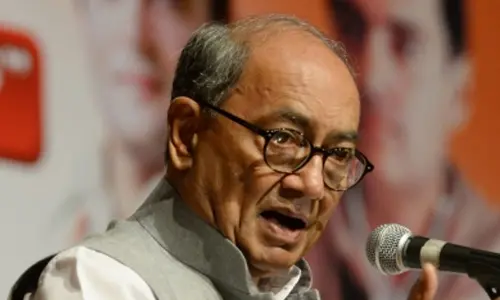Amaravati: Gandhiji leaves many imprints in Andhra Pradesh

1. Mahatma first visited Vijayawada (Bezawada) on March 31, 1919 and addressed a public meeting on Satyagraha at Rammohan Library.
2. He visited the city in 1920, 1921, 1929, 1933, 1937 and 1946
Amaravati: Mahatma Gandhi's imprints across Andhra Pradesh are many, his numerous visits to the state left an indelible mark and inspired a generation to plunge into the Indian freedom struggle and fight the British during the 1920s and 1930s. Gandhi vigorously toured coastal Andhra and Rayalaseema regions many times over the years as part of his varied agitations against the British, be it the Non-Cooperation Movement, the Civil Disobedience Movement or the Khaddar (khadi) yatra.
Vijayawada, the bustling commercial city on the banks of River Krishna, though, held a special place for Gandhi. "It was at the Congress working committee meeting in Vijayawada in 1921 that Gandhi's leadership (of the freedom movement) was accepted," former chairman of Andhra Pradesh Official Language Commission Mandali Buddha Prasad recalled.
At that session, freedom fighter Pingali Venkaiah designed and handed over the tricolour to Mahatma Gandhi which later became the national flag. Gandhi visited Vijayawada city several times between 1919 and 1946. On his first visit on March 31, 1919, he addressed a public meeting on Satyagraha at the historic Rammohan Library and transformed freedom fighters like Ayyadevara Kaleswara Rao and Mutnuri Krishna Rao into Gandhians. He later visited Vijayawada, then known as Bezawada, in 1920, 1921, 1929, 1933, 1937 and 1946.
The place where the Congress committee meet was held in 1921 was later named as Gandhinagar in the heart of Vijayawada. In commemoration of his multiple visits to Vijayawada, the hill in the One-Town area has been named after him and a Gandhi sthupa was erected. The hill is now a famous tourist attraction in the city and also houses a planetarium, the first in this region.
"No other leader toured our region (Krishna district) as vigorously and extensively as the Mahatma. He visited villages deep in the Diviseema region, which had no roads worth the name. He came in boat and waded through shrubby paths and spread the significance of khadi as there were many weavers' families in the region," Mandali Buddha Prasad said.
The Mandali family had close affinity with Gandhi, who visited it in Avanigadda. In memory of the Mahatma, former minister Mandali Venkata Krishna Rao established the Gandhi Kshetram in Avanigadda to propagate the Gandhian philosophy and ideals. The National College in Machilipatnam, then known as Masulipatnam, played host to Gandhi on two occasions. His memorial on the college campus has an inscription of Gandhi's observations as a visitor. "I have passed two quiet and what shall always remain with me sacred days on the sacred grounds on this great educational institution. As an Indian, I feel proud of it," the Mahatma wrote about the first National College in the country, after his two-day stay in April 1921.
Umanadh's parents worked as lecturers in the college and his family has deep attachment with it. Another landmark institution in this part of Andhra Pradesh to have Gandhi's imprint is the "Saaraswata Niketanam", a library at Vetapalem in Prakasam district, which completed its centenary last year.














